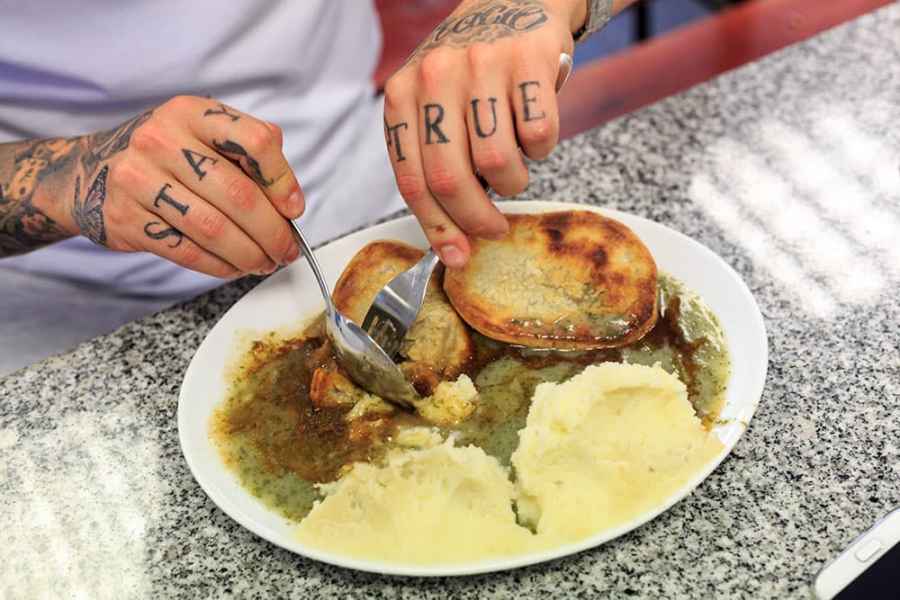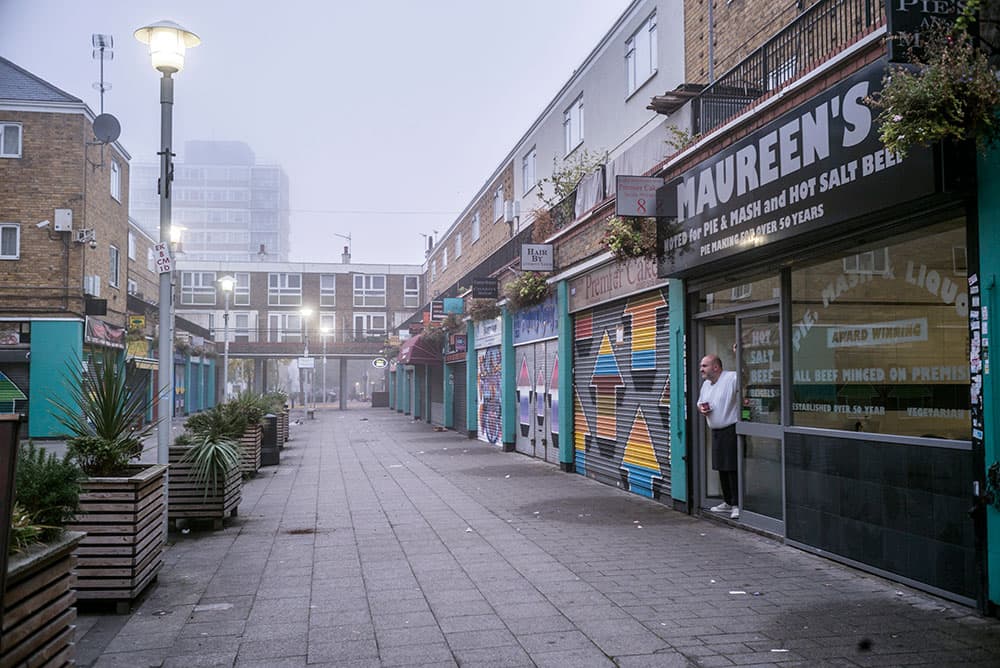
Jason Patterson starts his day at Maureen’s Pie and Mash shop in Poplar, East London.
Pie and mash
The Englishman and the Eel is a journey into the culture of that most London of institutions, the eel, pie and mash shop. In a sense it follows on from my last book, The Palaces of Memory, which was about the forgotten spaces of the Indian coffee houses – my shelter during 20 years of working and sometimes living in India. The palaces reminded me of my own past growing up in Hackney in the 1970s and, after spending much of my working life in the developing world, I wanted to re-explore this.

Scaffolder Joe eats lunch at Robins Pie & Mash shop in Southend-On-Sea
Eel, pie and mash shops, along with rough pubs and greasy spoon cafes, were the landmarks of my upbringing and I felt it would be interesting to document a culture I grew up in but travelled away from. I’ve photographed and written about 30 of these shops in and around London. They hold the memories of a largely undocumented working-class culture. In decline, they are however still recognisable – serving warm comfort food. Steam. Tea. Laughter. In Essex, the East End’s new spiritual home, they are undergoing something of a renaissance – identifying as they do with a reimagined and distilled working-class culture that’s geographically separate from its traditional roots.

At Arments Pie and Mash shop they use an old family recipe
Talk, listen and wait
The execution of the project was relatively straightforward. The resulting book is not encyclopaedic, rather I wanted to record the most interesting culture of the places. I extended the work outwards, shooting eel fishing in Lough Neagh in Northern Ireland as well as two of the remaining eel processors in London. I also wanted to explain the changed landscape by including East Enders too frail and elderly to get to the shops. I photographed them at home, with the food brought to them.
In terms of execution of the work, I do what I usually do – talk, listen and wait. The key to good reportage is time and if you spend long enough, good images will come. I don’t think anybody refused to have their picture taken and I captured customers and staff going about their daily lives. In terms of narrative, I decided early on to document the rhythm of the day, from opening up to closing, ensuring that I had a comprehensive list of images but leaving enough space for serendipity. It was a simple matter of observing the ebb and flow of daily life and those moments that were both interesting and banal, and making the best images that I could.

A joyous exchange at The Heath Pie Shop in Dagenham, Essex
I shot the series with two cameras and two lenses – a Leica M-240-P and f/1.4 35mm Summilux lens and a Canon EOS 5D Mark III with a 50mm f/1.4 lens.
I’ve spent much of my career as an assignment photographer for magazines but I’ve always tried to pitch editors stories that I feel are important, and that speak to me in some way. When I left university in 1989 (I did a politics degree, nothing to do with photography) one of the first places I photographed to try and build a portfolio was the (now closed) local pie and mash shop I’d grown up with in Dalston. Years later in 2011, I pitched (successfully) a story to a German magazine about the shop’s culture and it was that that made me realise how significant the shops were and how they, and the eel in general, – rare, endangered but surviving – could be used as a metaphor for both the culture that I come from and my own journey.
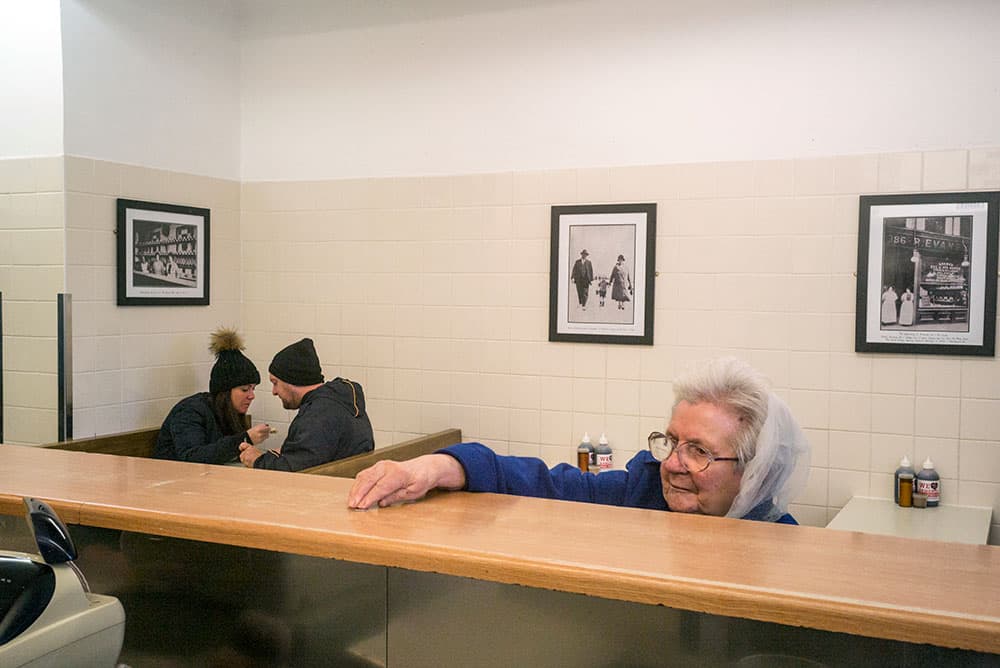
The customers at Arments Pie and Mash shop span generations
To back Stuart’s crowd-funding campaign to produce a beautiful limited edition book of this project visit Kickstarter.com and search ‘The Englisman and the Eel – London’s Eel, Pie & Mash shops’.
Stuart Freedman
Stuart Freedman has been a photographer for more than 25 years, covering stories from Albania to Haiti. His work has been featured in many high-profile titles including The Sunday Times and Newsweek. In 1999 he was selected for the Agfa Young Photojournalist of the Year. Visit www.stuartfreedman.com.
Beside the sea
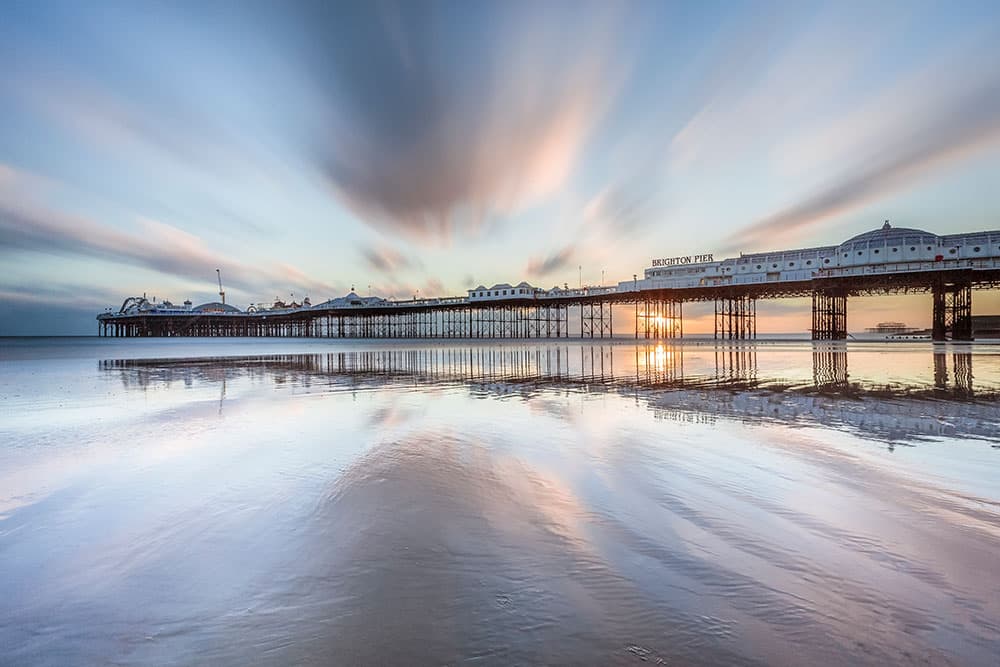
The sand in Brighton is hidden under the sea most of the time
I grew up in Brighton, and when I began taking photographs on the beach I had a notion that this was in some way just ‘practice’ for the more serious photography projects I would get round to starting one day. A little while later it came as something of a revelation to realise that this had become the project, and that a small body of work was beginning to emerge. Significantly, I was more inspired by this most local of landscapes than I had been by any of the other places I had attempted to shoot.
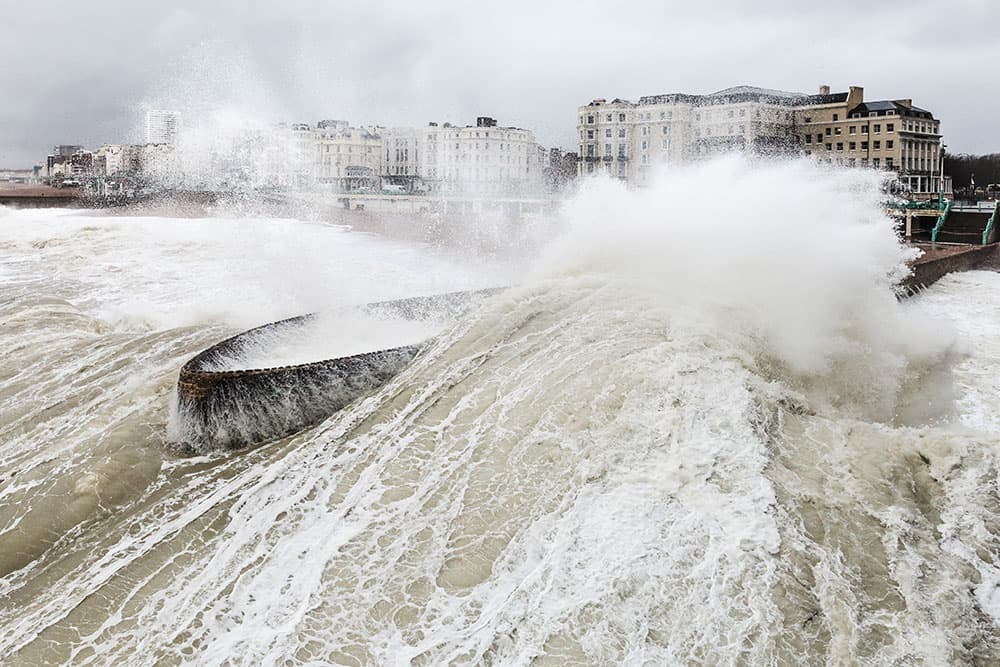
If you stand in the wrong place during a storm you’ll soon know about it!
The huge bonus of embarking on a local project like this is continual access to the subject matter. Before even picking up a camera I had years of experience of living here to draw on. Locations were familiar, access was simple and there was more than enough variety to keep me happy for years. Sounds great, but my familiarity with it can occasionally make it feel like I’m stuck in a bit of a rut. The real challenge is keeping myself inspired by trying to capture the familiar in an unfamiliar way, to use the ever-changing weather and light to my advantage, and give the viewer a sense of the place that can only be gained by spending an awful lot of time here.
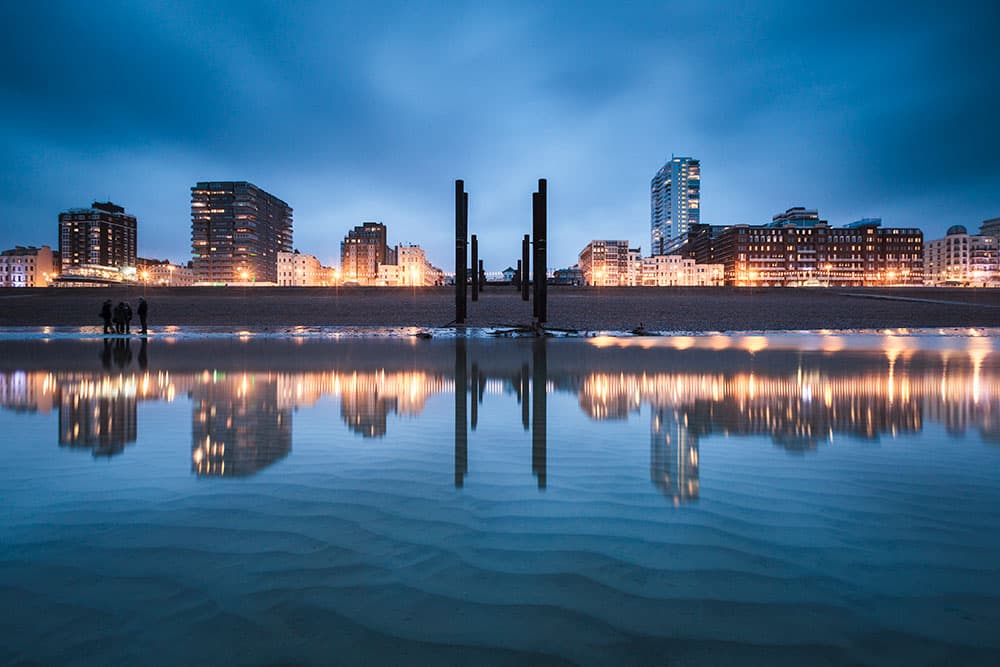
Seafront reflections and some structural remains of the West Pier
Time and tide
Along the way I’ve discovered all sorts of things about my home town that I had previously taken for granted. I’ve had to learn more about the tidal range across the year and the way in which winter storms affect the amount of sand that’s revealed at low tides (yes we have sand in Brighton, we just keep it hidden under the sea most of the time). I’ve learned more about the migration patterns of starlings and when and where they like to murmurate each evening in winter. I have a much better sense of where the sun will be rising and setting in the sky throughout the year, and how this plays into the light we get on the beach, and I have a much better idea of how the local weather will affect the kind of shots I can get. I also learned exactly where the biggest waves will land on you if you stand in the wrong place on the Palace Pier in a storm! You don’t forget that in a hurry. I’ve also met all sorts of interesting characters. My fellow locals are a goldmine of useful information, ideas and opinions. All of which is feeding back into creating work that I hope is more than just pictures.
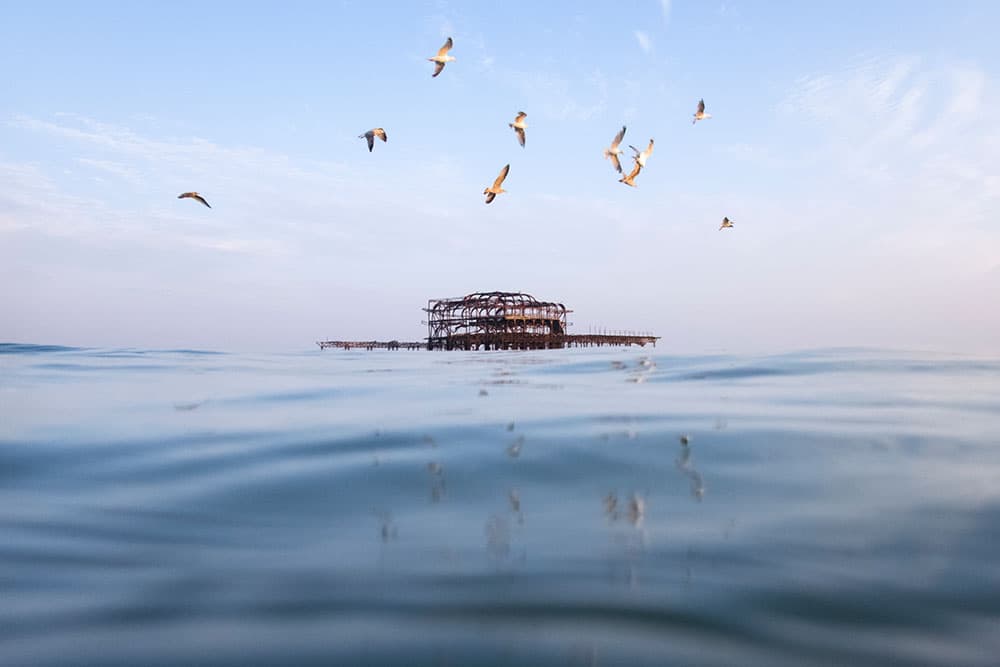
A swimmer’s-eye view of the West Pier taken with a waterproof camera
Reaching a wider audience
In 2014 I used some local exhibitions of these images as a springboard to open my own gallery, which is rather conveniently located right on the beach where they were taken. This has proved a fantastic way to show this project to a bigger audience, which is made up of both locals and tourists alike, and listen to what they have to make of it all. The variety of conversations that can begin with one of the pictures is astonishing and keeps adding to my list of ideas for images I’d like to add to the project. Having started this project by accident, I’m starting to realise that I may not ever finish it either. In fact it may only be ended if I cease to be a local, and I hope that’s not something that will happen any time soon.
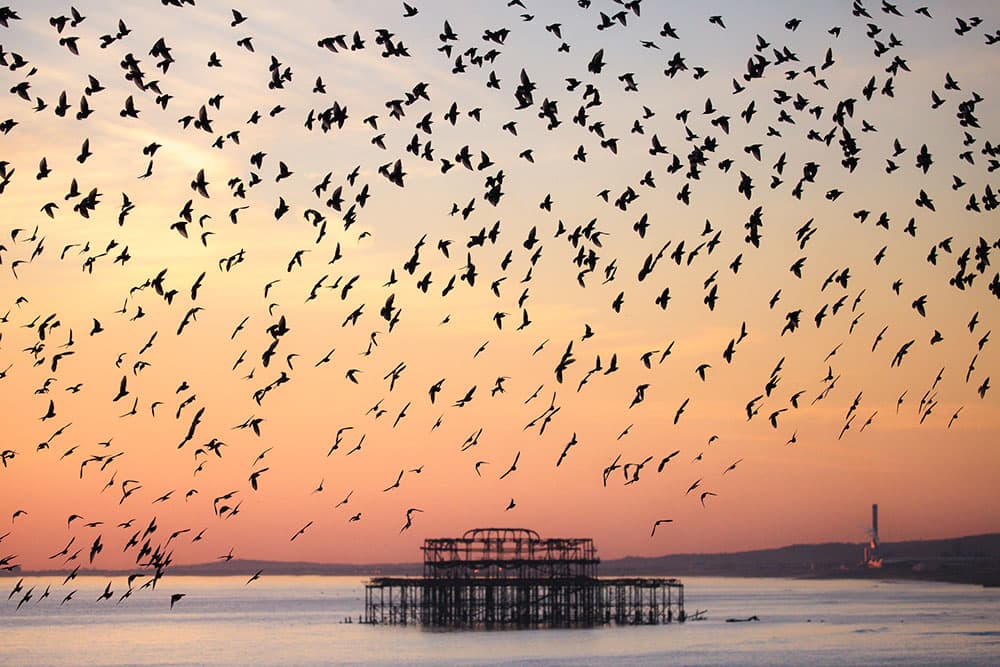
Learning about the migration patterns of starlings helps Finn plan pictures
Finn Hopson
Landscape photographer Finn Hopson has spent the past seven years shooting his local surroundings in Brighton and the South Downs National Park. In 2014 he opened the Brighton Photography Gallery opposite Brighton’s West Pier. You can see more of his work at www.brightonphotography.com and find him on Instagram and Twitter as @finnhop.
Portrait of an artist

Fred Butler, accessories designer, Hackney Studios
Much of my personal work is based around my experiences of living and working in East London. A few years ago, I became interested in the workspaces of Hackney, especially those used by people in creative industries. I met a girl, Isobel Webster, at a market stall. She looked like a Pre-Raphaelite goddess, her red hair falling over her technicolour catsuit. I asked if I could photograph her in her studio (see below) so that I could see the tools of her trade and what she was making, and she agreed. Clues to her craft were scattered all around her space: a gold bike helmet stashed on top of a cupboard, swatches of fabric and a stack of patterns. At the end of the session, I felt energised and wanted to do it all again. I invited Isobel to suggest someone to photograph, someone she found inspiring – someone she wanted to celebrate. She took me to Louise, who took me to Alex, who took me to Anna. And that’s how it all started.
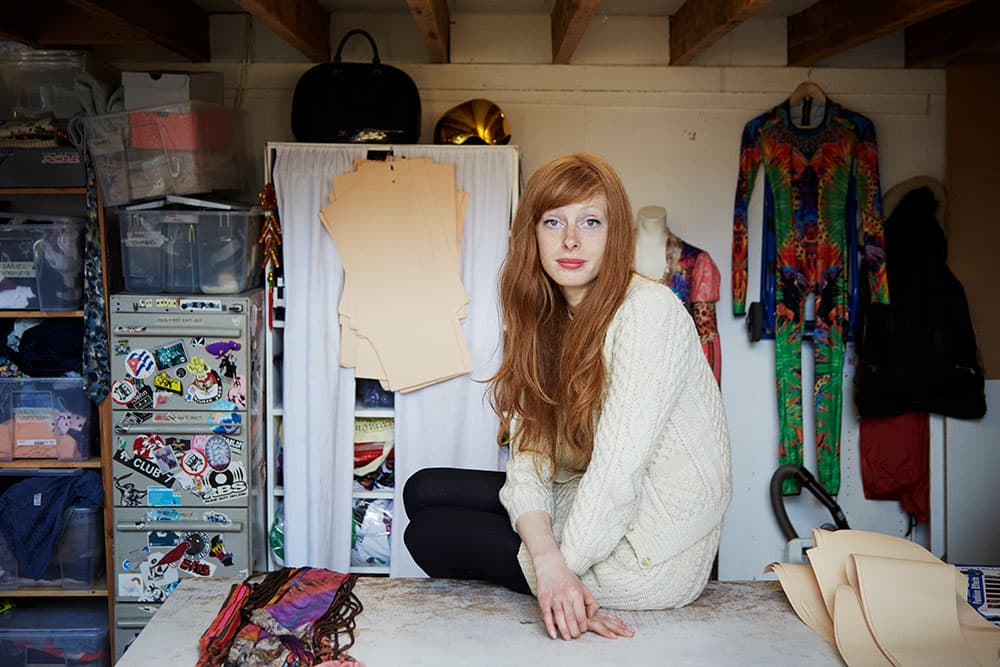
Isobel Webster, fashion designer, Hackney Studios
Authentic family tree
Having the sitter suggest the next subject meant I didn’t have to cold-call anyone. The names tumbled on for four years, and I became addicted to the process. I loved the way it was self-curating; I didn’t have any control over the nominations. Each person was free to drive the project in whatever direction he or she felt was important. Also, given that each subject had been nominated by one of their colleagues, an atmosphere of trust was forged. The result is an authentic family tree of Hackney creatives, rather than a selection chosen by an outsider. Inevitably the rules were sometimes broken, and if someone suggested two people the family tree would branch off. Very occasionally a thread would come to a natural end when no name was offered up.

Dan Holliday, artist, Hackney Studios
Being an artist is not all about being a success or being established. Some of the most creative people you know are the ones who are brave enough to follow their own path. They have an integrity that means they don’t care if their stuff is being sold or seen, but they can’t not make it because it means so much to them. I really wanted the nominations people made to come from the heart. The threads of loyalty and inspiration connecting people to one another was heart-warming; fine artists would nominate their assistants, students their tutors and designers would nominate performers. The usual art world hierarchies didn’t seem to apply here; the selections had humanity and a personal history giving the series a soul.

Prop and accessory maker Rosy Nicholas, Hackney Studios
Sense of community
Each setting was fascinating: I would be given a name, and then I would look them up, and a few days later I would be in the space where they worked. Rather than a cold starting point, with no connection, it became a really warm discussion about their relationship with the person who nominated them, their work, and our community. I’ve lived in Hackney for 25 years, so it felt like I was allowed to be there. After many conversations, certain themes began to emerge about the gentrification of the area, the evictions and the lack of affordable studio space. Cities seem to demand change with little regard for individuals, punishing those loyal inhabitants who have seen it through rough times when no one else was interested. What is happening in Hackney is not unique – it’s being repeated in cities the world over.
Jenny Lewis
Jenny Lewis moved from Essex to Hackney almost 20 years ago, via a spell at Preston University where she acquired a degree in fine art. Since then, she has made her living as an editorial photographer, but continues to pursue a range of personal projects. Visit www.jennylewis.net.
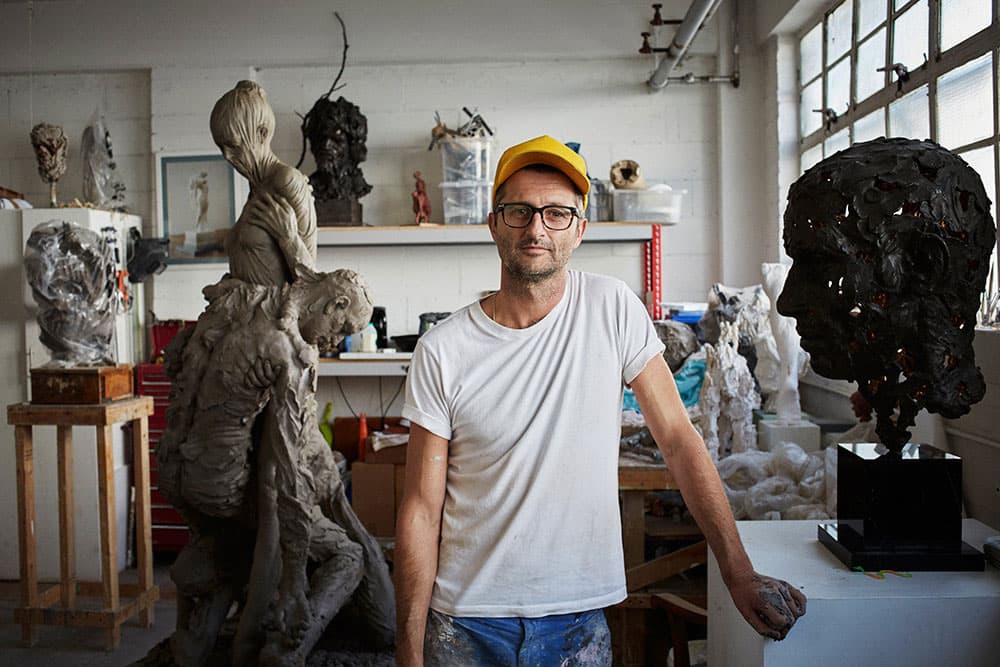
Kevin Francis Gray, sculptor, Hackney Studios
As much as I wanted to investigate all of these individuals, it was almost like I was trying to find my place in the community – I wanted to figure out who I was and how I fitted in. I was trying to find my tribe and to feel more connected.
Jenny’s book, Hackney Studios, is published by Hoxton Mini Press.

